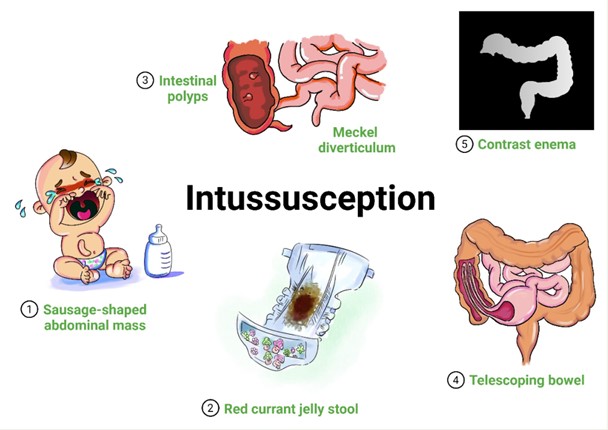A mother brings her 3-week-old son to the clinic because he is vomiting "all the time." In performing a physical assessment, the nurse notes that the infant has poor skin turgor, has lost 20% of his birth weight, and has a small palpable oval-shaped mass in his abdomen. Which intervention should the nurse implement first?
Initiate a prescribed IV for parenteral fluid.
Feed the infant 3 ounces of Isomil.
Give the infant 5% dextrose in water orally.
Insert a nasogastric tube for feeding.
The Correct Answer is A
The presenting symptoms of the infant, including persistent vomiting, poor skin turgor, significant weight loss, and a palpable abdominal mass, indicate a potential serious condition that requires immediate attention. These findings may suggest dehydration, malnutrition, and the presence of an abdominal mass that could be causing gastrointestinal obstruction or other underlying pathology.
Initiating a prescribed IV for parenteral fluid is the priority intervention to address the potential dehydration and fluid imbalance in the infant. This will help restore and maintain adequate hydration while further diagnostic evaluations and interventions are initiated.
Feeding the infant, giving 5% dextrose in water orally, or inserting a nasogastric tube for feeding should not be implemented as the first intervention in this case. It is important to stabilize the infant's fluid status before initiating oral feedings or other interventions to address the underlying cause of the symptoms.

Nursing Test Bank
Naxlex Comprehensive Predictor Exams
Related Questions
Correct Answer is C
Explanation
The correct answer is Choice C: “This must be a very difficult time for you.”
Choice A rationale: Telling the parent “You didn’t do anything wrong” might seem comforting, but it doesn’t address the parent’s feelings of guilt or responsibility.It’s important to remember that myelomeningocele is a birth defect that occurs when the spine and spinal cord do not develop completely1.It’s often not known why this happens, but it can be due to a combination of genetic and environmental factors2. Therefore, it’s not something the parent did or didn’t do.
Choice B rationale: Asking “Is there any particular reason why you think this is your fault?” could potentially lead to a constructive conversation. However, it might also make the parent feel defensive or as if they need to justify their feelings. It’s crucial to approach this situation with empathy and understanding, acknowledging the parent’s feelings without making them feel judged.
Choice C rationale: Saying “This must be a very difficult time for you” is the most helpful response because it acknowledges the parent’s feelings and offers empathy. It doesn’t place blame or make assumptions. Instead, it opens up a space for the parent to express their feelings and concerns.
Choice D rationale: While it’s true that surgery can help manage the condition1, saying “With surgery, your baby should have a full recovery” might be misleading.Myelomeningocele is the most severe form of spina bifida and can cause moderate to severe disabilities, such as muscle weakness, loss of bladder or bowel control, and/or paralysis2. Each case is unique, and while some children may have less severe symptoms, others may require lifelong management. It’s important to provide accurate and realistic information.
Remember, it’s essential to approach these conversations with empathy and understanding. Parents dealing with a diagnosis of myelomeningocele are likely experiencing a range of emotions, and they need support and accurate information.
Correct Answer is {"dropdown-group-1":"B","dropdown-group-2":"B"}
Explanation
Whether you are a student looking to ace your exams or a practicing nurse seeking to enhance your expertise , our nursing education contents will empower you with the confidence and competence to make a difference in the lives of patients and become a respected leader in the healthcare field.
Visit Naxlex, invest in your future and unlock endless possibilities with our unparalleled nursing education contents today
Report Wrong Answer on the Current Question
Do you disagree with the answer? If yes, what is your expected answer? Explain.
Kindly be descriptive with the issue you are facing.
